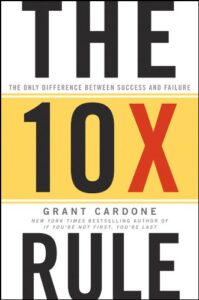Today’s socio-economic landscape is highly uncertain. It is disrupted by many factors, foreseen or not, controllable or not, and our social and work lives undergo constant changes. Where does it leave us, the people living inside this volatile, complex, and ambiguous environment?
The Paradox
In such environment, one might think that everything is stagnating and that the opportunities are gone for the time being. That this is a time of scarcity and that status-quo is an acceptable outcome. While this seem a logical conclusion to the world around us and the constant negative information showed in the medias, there is another way to look at it.
Start looking around you, listening to your colleagues and friends, reading specialised literature and you will soon realise opportunities are still there. John got a promotion last month, Laura’s company is expending to the neighbouring markets, Greg and David launched their first business, Mari secured a big sale, and it goes on and on….
Why is it then, than some people seem to thrive when the rest of the world seems to slow down?
Here are some elements of response from my own experience and readings.
1. The Scarcity Mindset
In his book “The 10X Rule”, Grant Cardone writes about how the world react when the economy shows signs of a slow-down. Companies start to tighten control and to heavily cut costs (e.g. marketing costs, R&D costs, labour costs). They also become very careful and are avoiding risks at all costs. These reactions are meant to keep the company sustainable and protect its assets. However, when a company is focused on savings and cost-cuts, it is backing off from the market. Such strategies rarely allow for expansion of the activities or the client base. What’s more, such saving mindset rarely stops with cash, but seems to always extend to the rest of the company: employees’ energy, creativity, and efforts.
This is an opportunity for those which, despite the adverse circumstances continue their activities, production, and development. By doing so, they become more visible, gain in reputation and as a result, increase their market share.
2. The fear factor
One of the reason people enter the scarcity mindset is fear. Fear of failure, fear of loss, fear of change, fear of success… It has many forms.
Nowadays, there are very few circumstances where we still fear for our lives, but fear remains one of our main barriers. One interesting Acronym for “fear” that helps rationalise it is:
FEAR – False Events Appearing Real.
Cardone uses fear as a trigger for action. For him, the feeling of fear is the green light that tells him he needs to do exactly that, right now. Time feeds fear. The longer you wait, the bigger your fear gets and the lower the chances you will move into action.
“Courage does not mean that you are not afraid. It means that you are afraid and you do it anyway.”
Tony Robbins
In other words, actions cure fear.
3. The Extra Mile
Whether in Business or in our private lives, we tend to optimise, do just what is needed to get by. In acting this way, we will more than likely survive, but definitely not thrive.
People who thrive, whether in uncertain or stable times, are the people willing to go the extra mile, do one more thing, try one more time. It might seem insignificant at the time, but by systematically doing more than what is expected of you (or expect of yourself…), those activities will sum up and differentiate you from the rest of the crowd, giving you a competitive edge and help you thrive.
To sum it up
- Keep pushing when everyone and everything around you seem to slow down
- Actions cure fear. Use your fear as a signal to act, now.
- When you feel you have done enough, just do one more thing.

The 10X Rule - Grant Cardone
Find it and more from my bookshelf!